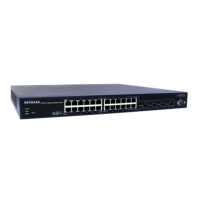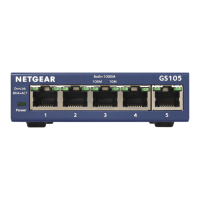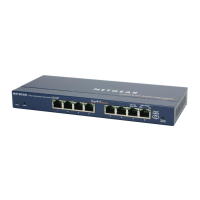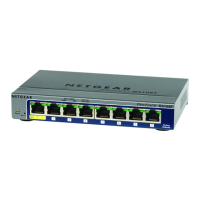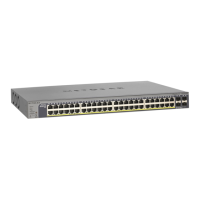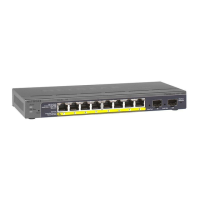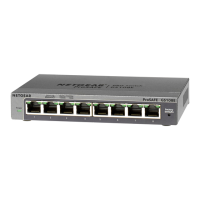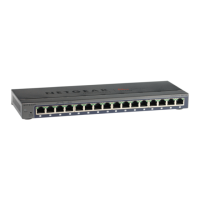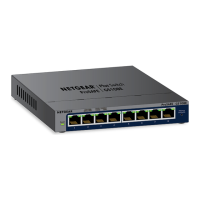User Manual for the NETGEAR 7200 Series Layer 2 Managed Switch Software Version 4
Switching Commands 8-27
202-10102-01, May 2005
show trapflags
This command displays trap conditions. Configure which traps the switch should generate by
enabling or disabling the trap condition. If a trap condition is enabled and the condition is detected,
the switch's SNMP agent sends the trap to all enabled trap receivers. The switch does not have to
be reset to implement the changes. Cold and warm start traps are always generated and cannot be
disabled.
Format
show trapflags
Mode Privileged EXEC
Authentication Flag May be enabled or disabled. The factory default is enabled. Indicates
whether authentication failure traps will be sent.
Link Up/Down Flag May be enabled or disabled. The factory default is enabled. Indicates
whether link status traps will be sent.
Multiple Users Flag May be enabled or disabled. The factory default is enabled. Indicates
whether a trap will be sent when the same user ID is logged into the
switch more than once at the same time (either via telnet or serial port).
Spanning Tree Flag May be enabled or disabled. The factory default is enabled. Indicates
whether spanning tree traps will be sent.
Broadcast Storm Flag May be enabled or disabled. The factory default is enabled. Indicates
whether broadcast storm traps will be sent.
DVMRP Traps May be enabled or disabled. The factory default is disabled. Indicates
whether DVMRP traps will be sent.
OSPF Traps May be enabled or disabled. The factory default is disabled. Indicates
whether OSPF traps will be sent.
PIM Traps May be enabled or disabled. The factory default is disabled. Indicates
whether PIM traps will be sent.
snmp-server community
This command adds (and names) a new SNMP community. A community name is a name
associated with the switch and with a set of SNMP managers that manage it with a specified
privileged level. The length of name can be up to 16 case-sensitive characters.
Note: Community names in the SNMP community table must be unique. When making multiple
entries using the same community name, the first entry is kept and processed and all duplicate
entries are ignored.
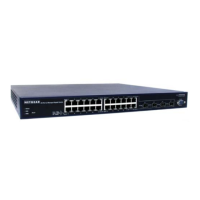
